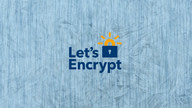
Get faster and more secure DNS resolution with Knot Resolver on Linux
A tutorial for setting up a recursive DNS over TLS resolver server with Knot Resolver on Fedora Linux.

A tutorial for setting up a recursive DNS over TLS resolver server with Knot Resolver on Fedora Linux.

/etc/resolv.conf on LinuxTake manual control of your Linux system’s DNS resolution and keep programs from interfering with and overwriting your resolv.conf file.

Ads had promised me that Hover.com was a great domain registrar. Trusting them to handle my domains turned out to be a big mistake.

I’d registered my Ctrl.blog domain with Get.blog. That service no longer exists and my domain was transferred to WordPress.com without notice.

Let’s Encrypt has made it really easy to obtain TLS certificates. Here is how to block the service from issuing certificates for your domains.

Add DNS CAA records for your domains to block unauthorized certificate authorities (CAs) from issuing certificates for your domain names.

A comparison review of six GeoDNS service providers. GeoDNS can help reduce latency by directing your website traffic to the nearest datacenter.

TXT record normalizationBe wary when entering DNS TXT records in the Linode DNS Manager. The web interface doesn’t properly normalize user input.

A quick survey of the use of DNS SRV records for auto-configuration of email and calendar hosting services. Provider support is fairly good.

Microsoft is working on baking Multicast-DNS and DNS Service Discovery, two widely deployed network-discovery protocols, into Windows 10.

The popular mDNS-utility Avahi sees its first update in three years. The update addresses multiple issues with IPv6 and log-flooding from Windows 10 clients.

Two programs struggle for control over your resolv.conf if you’ve installed Debian from an IPv6-capable network. Take back control over DNS.